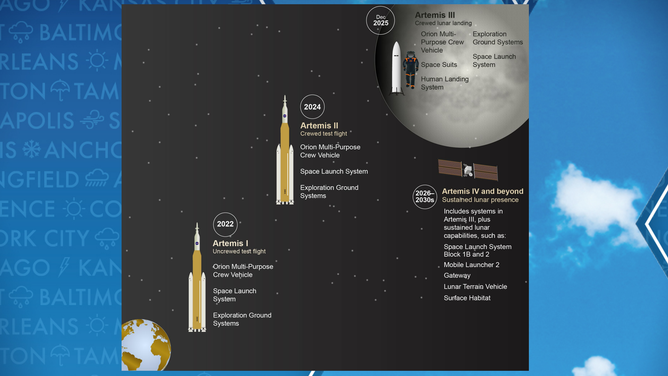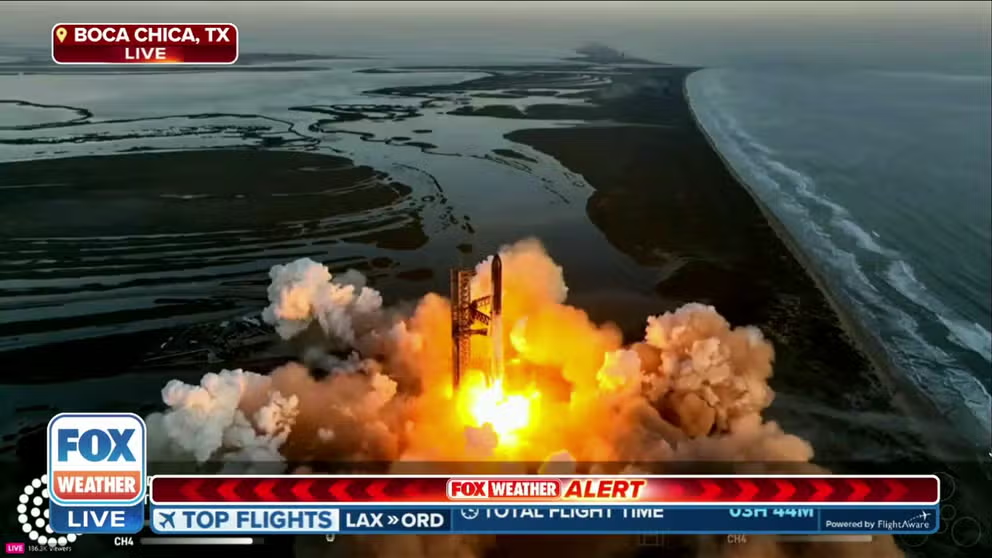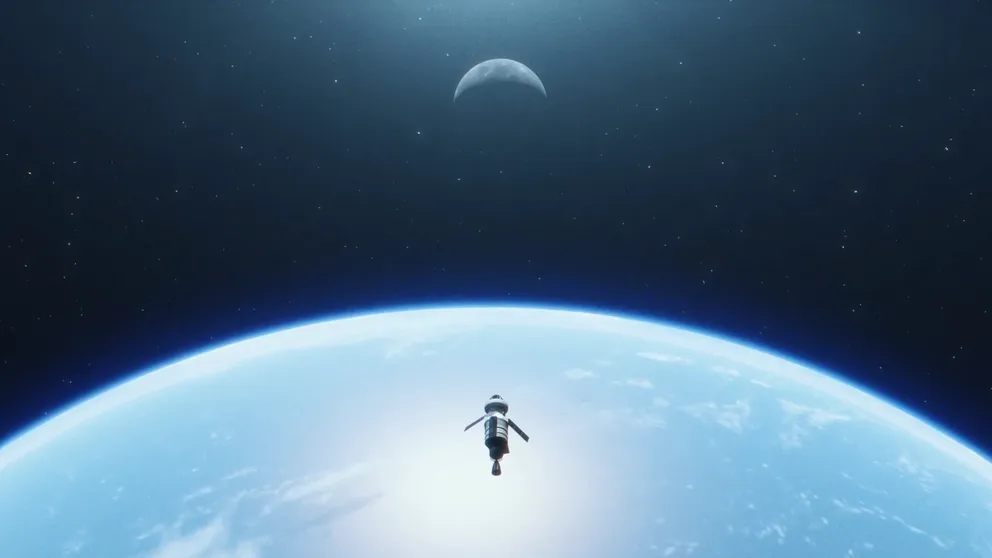Report finds Artemis III moon landing likely years behind schedule
The Artemis I test flight was considered to be a critical step toward NASA’s goal of returning humans to the Moon. If the first two missions meet expectations, an Artemis III launch is expected to carry astronauts to the lunar surface.
FILE: Axiom Space reveals new Artemis III spacesuits
NASA and Axiom Space revealed their new modern spacesuits Wednesday morning. Fox News correspondent Phil Keating has the latest with an exclusive look.
WASHINGTON – As NASA and its contractors continue to push ahead with the Artemis program, a new report by the U.S. Government Accountability Office – an independent, nonpartisan "congressional watchdog" – found that the earliest humans are likely to return to the Moon is 2027 – two years after NASA's stated goal.
The Artemis program was started in 2017 with the goal of sending astronauts back to the Moon and possibly Mars but has faced delays since its inception.
NASA launched the Artemis I rocket mission in 2022 and has maintained it intends to send a crew on Artemis II around the Moon in late 2024.
The results of the 2024 mission would impact any decisions for the Moon landing mission in 2025, but some government officials said that the NASA timeline is too ambitious and that the agency is likely on track to miss crucial targets.
"The complexity of human spaceflight suggests that it is unrealistic to expect the program to complete development more than a year faster than the average for NASA major projects, the majority of which are not human spaceflight projects," authors of the GAO report stated. "GAO found that if development took as long as the average for NASA major projects, the Artemis III mission would likely occur in early 2027."
SEE THE OBJECTS HUMANS LEFT BEHIND ON THE MOON

Artemis mission plans
(FOX Weather)
SpaceX and Axiom partnerships
The report highlighted a lot of remaining work by both SpaceX and Axiom, who are principal contractors of the Artemis program.
A critical part of the mission is considered to be SpaceX’s Starship rocket, which has been under development in Texas.
The private space company owned by CEO Elon Musk has yet to successfully finish a rocket test that proves the spacecraft is capable of reaching orbit and returning to Earth.
Despite the spectacular failures that have resulted in explosions, SpaceX and NASA leadership have lauded the progress that has been made on the Starship rocket.
"Congrats to the teams who made progress on today’s flight test," NASA Administrator Bill Nelson said after a failed test mission on November 18. "Spaceflight is a bold adventure demanding a can-do spirit and daring innovation. Today’s test is an opportunity to learn—then fly again. Together NASA and SpaceX will return humanity to the Moon, Mars & beyond."
NASA: MEGA MOON ROCKET EXCEEDED EXPECTATIONS; PREPARATIONS UNDERWAY FOR FIRST CREWED ARTEMIS MISSION
SpaceX Starship second launch delivers excitement, reaching edge of space
SpaceX delivered on its promise of excitement when it launched the Starship spaceship from South Texas on Saturday.
Another sticking point, according to the GAO, is the design of spacesuits by Axiom.
The original suit design reportedly did not provide the amount of emergency life support needed for the Artemis III mission.
This has caused engineers to go back to the drawing board to see if there is a way to encapsulate more oxygen, which could result in delays to the overall mission.
NASA leadership said in July that it was reviewing the Human Landing System schedule and would adjust the launch date as necessary.
NASA ORDERS $2 BILLION WORTH OF SPACECRAFT FOR FUTURE ARTEMIS MISSIONS
If any of the contractors are unable to satisfy NASA requirements, it remains unclear whether the space agency is in a position to adopt an alternative plan in order to successfully complete a launch, landing and return.
NASA officials told the GAO they are applying NASA guidance and best practices from earlier human spaceflight efforts to the Artemis mission in order to achieve a certification of flight.
Sending humans into space is difficult
Artemis is not the first U.S. space program that has faced difficulties and lengthy delays.
The Apollo program was originally proposed in 1960 during the Eisenhower administration but did not land a the first humans on the Moon until 1969.
Due to frustrations with delayed schedules and running over budget, an extensive review was launched that was critical of contractors and government management.
Early plans for the Space Shuttle program, known as the Space Transportation System, date back to the 1960s but didn’t first launch until 1981.
An investigation by the U.S. Comptroller General said years of delays "resulted from identification of new requirements, funding constraints, and development difficulties with the system."
If the Artemis III team is able to keep the 2025 launch date, it would actually buck the trend of lengthy delays.
"We don’t launch until it’s right," Nelson said after an Artemis I launch attempt was scrubbed. "You don’t want to light the candle until it’s ready to go."
Artemis 1 mission: Relive Orion's historic journey to the moon before splashdown
Splashing down on December 11, the successful completion of the Artemis I mission paves the way for future expeditions to Mars and other destinations in the solar system.


